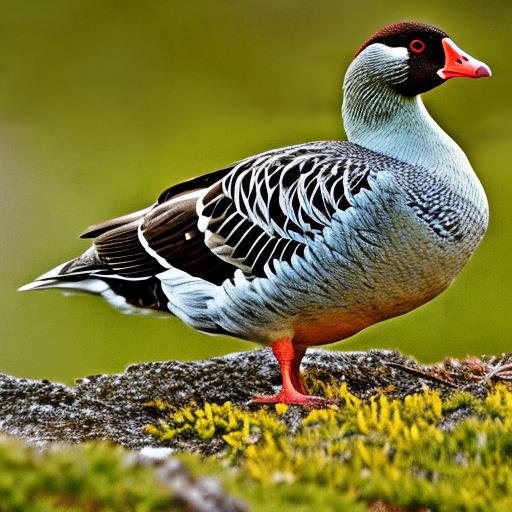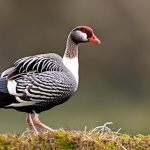Geese on roofs may seem like an unusual problem, but it is one that many homeowners and property owners face. Understanding the behavior of geese and how to deter them is important for maintaining the integrity of your roof and ensuring the safety and cleanliness of your property. In this article, we will explore the behavior of geese, how to identify signs of geese on your roof, the potential dangers they pose, and various methods for deterring them.
Key Takeaways
- Geese are social animals that prefer to live in groups and are highly territorial.
- Signs of geese on your roof include droppings, feathers, and loud honking noises.
- Geese on your roof can cause damage to shingles, gutters, and other roofing materials.
- Choosing the right deterrents for your roof depends on the severity of the problem and the location of your property.
- Installing physical barriers, using sound and light, and natural methods can all be effective in deterring geese.
Understanding the behavior of geese
Geese are known for their nesting habits and territorial nature. They typically mate for life and return to the same nesting site year after year. Geese are also highly territorial and will defend their nesting area aggressively. This territorial behavior can lead to conflicts with humans, especially if their nesting site happens to be on your roof.
Identifying the signs of geese on your roof
One of the first signs that you may have geese on your roof is the presence of droppings. Geese droppings are large and can be quite messy. They are typically greenish-brown in color and may be found in concentrated areas on your roof or around the perimeter. Another sign of geese on your roof is the presence of feathers. Geese molt their feathers regularly, so finding feathers on your roof is a clear indication that they have been there.
The dangers of geese on your roof
Having geese on your roof can pose several dangers. Firstly, their droppings can cause damage to your roof over time. The acidity in their droppings can eat away at roofing materials, leading to leaks and other structural issues. Additionally, geese droppings can be a health hazard as they can contain bacteria and parasites that can be harmful to humans.
Choosing the right deterrents for your roof
There are several different types of deterrents available for keeping geese off your roof. Physical barriers, such as netting or spikes, can be effective in preventing geese from landing on your roof. Sound and light devices can also be used to deter geese, as they are sensitive to loud noises and bright lights. Finally, there are natural methods for deterring geese, such as planting certain types of vegetation or using decoys.
Installing physical barriers to keep geese away

To install physical barriers, such as netting or spikes, you will need to assess the layout of your roof and determine the areas where geese are most likely to land. Netting can be installed over these areas to prevent geese from landing, while spikes can be placed along the edges of your roof to discourage them from perching. It is important to ensure that these barriers are securely installed and regularly maintained to be effective.
Using sound and light to deter geese
Sound and light devices can be an effective deterrent for geese. There are various products available on the market that emit loud noises or bright lights when geese approach. These devices can be placed on your roof or in nearby areas to create a deterrent zone. It is important to follow the manufacturer’s instructions for proper placement and usage of these devices.
Natural methods for keeping geese off your roof
There are several natural methods for deterring geese from your roof. Planting certain types of vegetation, such as tall grasses or shrubs, can create an unattractive environment for geese. They prefer open spaces where they have a clear line of sight, so creating barriers with vegetation can discourage them from landing on your roof. Additionally, using decoys, such as fake owls or coyotes, can also deter geese as they perceive these predators as a threat.
Consistency and persistence in deterring geese
Geese can be stubborn and persistent, so it is important to be consistent and persistent in your efforts to deter them. This means regularly maintaining physical barriers, ensuring sound and light devices are functioning properly, and regularly refreshing natural deterrents. Geese are creatures of habit, so if they find that your roof is no longer a suitable nesting site, they will move on to another location.
Seeking professional help for persistent geese problems
If you have tried various deterrent methods and are still experiencing persistent geese problems, it may be necessary to seek professional help. There are companies that specialize in wildlife management and can provide expert advice and assistance in deterring geese from your roof. They may use more advanced techniques, such as laser technology or trained dogs, to effectively deter geese.
Maintaining a geese-free roof for the long-term
Once you have successfully deterred geese from your roof, it is important to maintain a geese-free environment for the long-term. This includes regularly cleaning and maintaining physical barriers, ensuring sound and light devices are functioning properly, and refreshing natural deterrents as needed. Regular inspections of your roof can also help identify any potential issues or areas where geese may try to land.
Geese on roofs can be a nuisance and pose potential dangers to your property. Understanding their behavior and implementing effective deterrent methods is crucial for maintaining a geese-free roof. By being consistent and persistent in your efforts, seeking professional help if needed, and maintaining a geese-free environment for the long-term, you can ensure the safety and cleanliness of your property. Take action today to deter geese from your roof and enjoy a hassle-free living space.
If you’re looking for ways to keep geese off your roof, you might also be interested in learning about how many eggs geese lay. Understanding their breeding habits can provide valuable insights into their behavior and help you devise effective strategies for keeping them away from your property. Check out this informative article on how many eggs geese lay to gain a deeper understanding of these fascinating birds and how to manage their presence.
FAQs
What are the reasons for geese to be on my roof?
Geese may be attracted to your roof for various reasons such as seeking shelter, nesting, or foraging for food.
What are the risks of having geese on my roof?
Having geese on your roof can cause damage to your roof, gutters, and other structures. They can also create a mess with their droppings and feathers, which can be unsightly and unsanitary.
What are some effective ways to keep geese off my roof?
Some effective ways to keep geese off your roof include installing bird spikes, using decoys, using reflective tape or balloons, and using motion-activated sprinklers.
Are there any humane ways to keep geese off my roof?
Yes, there are humane ways to keep geese off your roof such as using decoys or reflective tape. It is important to avoid harming the geese or causing them unnecessary stress.
What should I do if I find a goose nesting on my roof?
If you find a goose nesting on your roof, it is best to leave it alone and avoid disturbing it. Once the eggs hatch and the goslings are able to fly, the geese will likely leave on their own. If you are concerned about the geese causing damage or creating a mess, you can contact a wildlife removal service for assistance.
Meet Walter, the feathered-friend fanatic of Florida! Nestled in the sunshine state, Walter struts through life with his feathered companions, clucking his way to happiness. With a coop that’s fancier than a five-star hotel, he’s the Don Juan of the chicken world. When he’s not teaching his hens to do the cha-cha, you’ll find him in a heated debate with his prized rooster, Sir Clucks-a-Lot. Walter’s poultry passion is no yolk; he’s the sunny-side-up guy you never knew you needed in your flock of friends!







